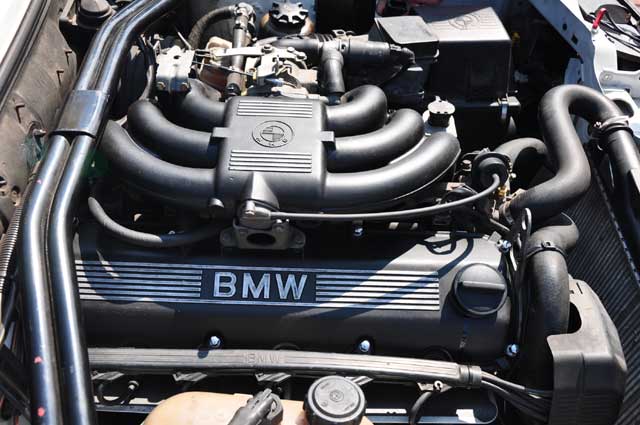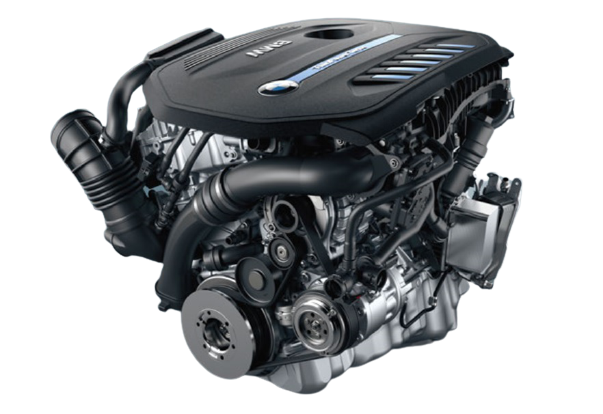A Comprehensive Overview to Recognizing BMW Engine Specifications
A Comprehensive Overview to Recognizing BMW Engine Specifications
Blog Article
Discovering the Advancement of Burning Engines in Modern Transportation Solutions
As we browse the landscape of contemporary transportation, the evolution of combustion engines stands as a testimony to human ingenuity and design expertise. From their simple starts to the innovative giants driving lorries today, combustion engines have actually undergone an amazing trip of technology and adjustment. Understanding the intricacies of this development not only clarifies the past however likewise paves the method for envisioning what lies ahead in the realm of transport modern technology. The interaction of history, modern technology, and environmental issues in forming the trajectory of burning engines develops a story that is both compelling and insightful.
Early Beginnings of Combustion Engines
Exactly how did the principle of combustion engines very first arise in the very early stages of transportation development? The roots of combustion engines can be traced back to the 17th century when the principles of internal combustion were initial explored.
The development minute featured the innovation of the first effective gasoline-powered engine by Karl Benz in 1885 - bmw engine. This engine led the way for the growth of the modern auto, transforming transportation systems worldwide. Subsequent innovations by Nikolaus Otto and Gottlieb Daimler additionally fine-tuned burning engine technology, bring about the automation of automobiles and the fast development of the transport sector
These early combustion engines were defined by their simplicity and effectiveness, laying the foundation for the facility and effective engines made use of in contemporary transport systems. The advancement of burning engines has actually contributed in shaping the way we take a trip and move products, marking a considerable milestone in the background of transport growth.
Change to Internal Combustion Modern Technology
The shift to interior combustion modern technology noted a pivotal change in the evolution of transportation systems. This change started in the late 19th century, with innovators like Nikolaus Otto and Gottlieb Daimler establishing the very first successful interior burning engines. These engines changed transport by using a more effective and powerful option to vapor engines and electrical motors.
Among the key benefits of inner burning engines was their ability to be reduced to fit into lorries, leading to the advancement of motorcycles and automobiles. This change from bulky, fixed engines to portable, mobile ones led the way for the modern-day transport systems we see today.
The shift to inner combustion technology also stimulated innovations in gas technology, leading to the advancement of gasoline and diesel as main gas resources for lorries. This shift not just made transport more easily accessible to the masses however also laid the structure for the oil and gas industry to end up being indispensable to worldwide economies.
Impact of Combustion Engines on Transport
The adoption of burning engines in transportation systems catalyzed an extensive change in the efficiency and speed of international wheelchair. Burning engines changed transport by providing a dependable and versatile source of power for various lorries, consisting of cars and trucks, ships, planes, and vehicles. This technology substantially improved the ability for products and people to conform fars away in shorter time frameworks, bring about raised connection between areas Home Page and countries.
Moreover, the extensive use combustion engines has actually had a substantial impact on financial growth. The ability to transfer products efficiently has actually spurred profession and commerce, enabling companies to expand their markets and reach customers worldwide. This has actually assisted in economic development and globalization, as products can now be delivered faster and in bigger amounts than ever.
However, the environmental influence of burning engines can not be neglected. The combustion of nonrenewable fuel sources has actually led to air pollution and greenhouse gas exhausts, contributing to climate modification and posturing wellness dangers to populations. bmw engine. Consequently, there is an expanding focus on developing alternate propulsion technologies to alleviate these adverse results and create a much more lasting future for transportation
Advancements in Burning Engine Design
Countless innovations in combustion engine style have thrust the evolution of transportation systems over the years. One noteworthy innovation is the growth of turbocharged engines, which make use of exhaust gases to drive a generator that presses incoming air, enabling even more fuel to be burned, leading to enhanced power result without a significant boost in engine dimension. In addition, direct shot innovation has actually enhanced fuel performance and efficiency by precisely managing the amount and timing of gas injected right into the combustion chamber. Variable shutoff timing systems have additionally revolutionized engine style by maximizing airflow at different engine rates, improving both power and effectiveness. An additional significant development is the assimilation of lightweight materials such as carbon fiber and aluminum alloys, minimizing overall engine weight and boosting lorry gas economic climate. Additionally, developments in computer-aided design have actually allowed designers to maximize engine performance and effectiveness through simulations before physical prototypes are built, saving time and resources in the growth procedure. These technologies jointly add to the constant enhancement of burning engines in modern-day transportation systems.
Future Patterns in Burning Engine Development
With modern technology developments driving constant advancement, the future of burning engine growth is poised to change transportation systems globally. One of the crucial trends in combustion engine advancement is the press towards better performance and decreased discharges.
An additional noticeable trend is the adoption of hybrid modern technologies in burning engines. Crossbreed engines incorporate traditional combustion modern technology with electric power, using improved fuel effectiveness and reduced emissions. As the automobile market shifts towards electrification, crossbreed burning engines This Site are viewed as a transitional remedy that links the void in between standard lorries and fully electrical ones.
In addition, the combination of wise technologies, such as expert system and information analytics, is anticipated to play a considerable function in the future of combustion engine growth. These innovations can maximize engine performance in real-time, leading to a lot more reliable combustion processes and enhanced general vehicle performance. Accepting these future fads will not just drive advancement in burning engine advancement but additionally add to a much more environmentally pleasant and lasting transport ecosystem.

Conclusion
Finally, the evolution of burning engines in modern-day transportation systems has actually been marked by significant improvements in innovation and layout. From the very early beginnings of combustion engines to the change to interior burning modern technology, these engines have actually had an extensive effect on transport. Innovations in burning engine design remain to drive progress in this area, with future fads concentrating on additional enhancing performance and lowering emissions. The future of combustion engines in transport looks encouraging as r & d initiatives remain to press boundaries.
The origins of burning engines can be mapped back to the 17th century when the concepts of interior combustion were first explored. These engines reinvented transportation by providing a much more powerful and reliable option to heavy steam engines and electric motors.

Report this page